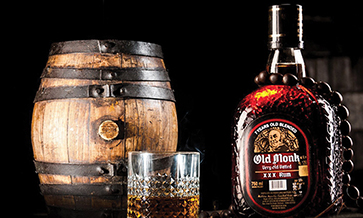It’s not possible to ignore gin anymore. And, hopefully, you aren’t even trying! Every decade or so one sees global trends picking up a spirit that takes over the imagination of a generation. Right now, we are the Gin Generation.
Globally, gin has been gaining popularity for some time now. Unless you’ve been living under a massive tee-totalling rock, you would have either tasted, heard of, or been part of a conversation about gins – craft or otherwise.
Starting in the UK, specifically London – the Mecca of gin – this new fancy for gin spread to Europe and the US. Scores of new brands have emerged in the past years, each championing the cause with its own brand story.
If you’re travelling through duty-free stores, brands like London-based Sipsmith, German Monkey 47 and Gin Mare from Spain are hard to miss. Popular brands like Copperhead from Belgium and Roku from Japan are proof that all over the world great gin is being made.
It hasn’t taken long for the movement to catch on in India. With Indians travelling a lot more and boutique importers bringing in interesting brands, India has warmed up to gin.
Hoary traditions
Traditionally considered a secondary drink, gin’s popularity here has been limited to club house lunches and inside tall glasses of fizzy lemonade. Today, a younger demographic has discovered gin and its popularity is evidenced not just by the availability of many global brands but the launch of home-grown ones.
Gin’s origins are found in the Netherlands; but gin in the form we see today is quintessentially British. At its basic, gin is neutral spirit redistilled with botanicals, main among them being the juniper berry. Other typical botanicals include Angelica and Orris root (ginger-like roots), coriander, pepper corns and lemon peel.
Juniper berries are not really berries – they are fleshy seed cones from the coniferous juniper trees. Technically, there are a few different ways to make gin. Each style infuses the botanicals with the base spirit differently.
The most popular style of gin making is the London Dry style. This style originated in London as a way to ensure better quality for gin, which for many years was considered a crude, low quality alternative to beers and wines.
A gin made in this style is necessarily neutral base spirit redistilled to at least 70% ABV with a choice of botanicals. Once redistilled, nothing can be added to the gin except water for dilution and a negligible amount of sweetener, hence the term ‘dry’.
These specifications are prescribed under the EU parliamentary regulations – to be called a ‘London Dry’ gin all of the above parameters have to be met. Interestingly, a London Dry gin can be made anywhere in the world, and while juniper berries are quintessential, this style does not prescribe a specific flavour for the gin.
As a result, gins are being made all over the world in this style. Brands are also experimenting with flavours and new botanicals to create gins that are not typically juniper-forward.
In India, all the gins launched so far have been made in the London Dry style. The Indian gin market is still young and there is a need to create a consumption habit for gin and an appreciation of its basic flavours.
Indian palate
In time, domestic consumption and, therefore, demand will have enough depth to enable introduction of different, and perhaps harder to produce styles of gin.
Using a globally recognised production standard also lends credibility to the process and helps young craft gin players follow set production guidelines in the absence of any domestic ones yet.
Greater Than gin was the first to launch in India as a classic London Dry gin that balances notes of juniper, citrus and spice. It serves as a perfect introduction to Indian consumers to the world of gins and is a great alternative for anyone looking to replace their imported London Dry gins with a local one.
The more recently launched Stranger & Sons does not brand itself as a London Dry, but nevertheless adheres to the standard in production. Other than Macedonian juniper berries, all the herbs and spices used in this gin are sourced locally. This is indicative of the growing trend to create gins with more nuanced flavours than just juniper.
London Dry gins are no longer the classic, juniper-heavy spirits of the past. Locally sourced or foraged botanicals are being used to develop uniquely flavourful liquids.
While still being London Dry gins and guaranteeing a certain standard, this style allows for newer flavours. This is all the more relevant in India given the abundance of local botanicals that can be used to make gin.
Compound gins
Another case in point is Rampur Distillery’s Jaisalmer gin that uses 11 botanicals to create its liquid. The standout ones are coriander and vetiver, orange peel, cubeb pepper berries, lemon grass, Darjeeling green tea leaves and lemon peel – all sourced from different parts of India.
As existing brands develop and more brands enter the Indian market, the product story will take centre stage. The use of indigenous ingredients will, hopefully, lead to many new flavours and even different styles of making the gin.
Compound gins – the other style that infuses botanicals after re-distillation as well – such as Hendricks do well with Indian consumers because of their lighter notes. This style has the ability to infuse milder notes with juniper without either getting overpowered, and this might work well for the many indigenous ingredients.
With more distillers trying out new botanicals and recipes, London Dry gins will take on a more modern style that will ensure a basic standard with limitless scope in terms of quality and flavour. In India, gin is certainly in and its exciting times ahead.














